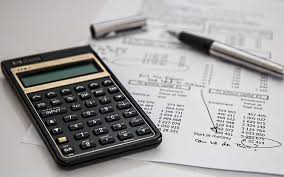Back to: FINANCIAL ACCOUNTING SS2
Welcome to class!
In today’s class, we will be talking about departmental accounts. Enjoy the class!
Departmental Accounts

MEANING OF DEPARTMENTAL ACCOUNTS
Usually, in a large organization, the operation is divided into separate departments. This is because such organizations have a large volume of transactions coupled with a wide range of lines of product and as such finds it convenient and for accounting purpose to separate or divide its operations into different departments. This affords the organization easy operations and accountability.
In departmentalized organizations, the accounting process entails keeping separate journal and ledger books for each of the departments such as separate cashbook separate purchases and sales books, separate stocks, separate returns and personal ledgers etc.
At the end of the financial year, the accountants bring together the separate journal and ledger books to integrate, compare and determine the department that performs better than the other (see final accounts).
FINAL ACCOUNTS OF A DEPARTMENTALIZED ENTERPRISE
The trading, profit and loss accounts of each of the departments in a departmentalized organization are drawn separately but in a combined format called DEPARTMENTAL, TRADING, PROFIT AND LOSS ACCOUNT.
The aim of departmental, trading, profit and loss account is to compare trading result and to assist the owner of the business in formulating policies, having known the departments that perform better and those that perform worse.
NB: The Balance sheet follows a normal procedure: not in a combined format.
Format
Departmental Trading, Profit and loss Account for the year ended 31st Dec. 19xx
A B C Total A B C Total
N N N N N N N N
Opening stock x x x x Sales x x x x
Add purchases x x x x Returns I.R x x x (x)
Inter dept. T/f x x x –
X x x x
Less clo. Stock (x) (x) (x) (x)
Cost of sales x x x x
Gross profit c/d x x x x
X x x x
x x x x
Expenses G/P b/d x x x x
Wages & Salaries x x x x Dis. Rec. x x x x
Rent x x x x
Commission x x x x
Depreciation x x x x
Motor expenses x x x x
Net profit c/d x x x x
X x x x x x x x
INTER DEPARTMENTAL TRANSFER AND APPORTIONMENT OF EXPENSES
- Inter-Departmental Transfer: Sometimes goods purchased by one department may be transferred to another department by reason of sales and such purchases transferred is deducted from the department giving it out and is added to the department receiving it.
- Apportionment of Expenses: Expenses are usually not separated to reflect expenses incurred by each department. As a result of this, there is a need for apportionment (i.e. division). Expenses must, therefore, be adjusted and then apportioned for each of the departments.
Methods
- Turnover Basis: This is the use of sales (i.e. Turnover as a basis of sharing (i.e. sharing ratio).
- Floor Space Basis: This uses the area of floor space occupied as the basis of sharing i.e. sharing ratio.
- The number of Articles Sold Basis: Ratio used is the items sold.
- Direct Analysis Basis: Ratio used here is specified.
- Equality Basis: The ratio used here is the number of departments existing.

ILLUSTRATION
Below is the trial balance of Akinbode Electronic shop for the year-end 31st December 2006.
N N
Sales: Dept E 30,000
Dept F 20,000
Stock (1/1/2006): Dept E 800
Dept F 750
Purchases: Dept E 22,000
Dept F 18,500
Commission 1,500
Salaries 800
Insurance premium 1,000
Stationery 450
Discount allowed 100
Discount received 350
Sundry expenses 110
Stock at close: Dept E 1,100
Dept F 900
NOTE
- The total floor area occupied by each department is
- Dept: E (2/5)
- Dept F: (3/5)
- Apportionment basis is:
- Commission, discount allowed – sales ratio
- Discount received – purchases ratio
- Insurance – floor area
- Other – equal apportionment
Solution
AKINBODE’S DEPARTMENT TRADING, PROFIT AND LOSS ACCOUNT FOR THE YEAR END 31ST DEC. 2006
DEPT E DEPT F DEPT E DEPT F
Stock (1/1/2006) 800 750 Sales 30,000 20,000
Purchases 22,000 18,500
Cost of goods avail. 22,800 19,250
Less stock (31/12) (1,100) (900)
Cost of sales 21,700 17,350
Gross profit c/d 8,300 2,650
30,000 20,000 30,000 20,000
Expenses G/P b/d 8,300 2,650
Commission 900 600 D/R 190 160
Salaries 400 400
Insurance 400 600
Stationeries 225 225
Discount allowed 60 40
Sundry expenses 55 55
Net profit 6,450 890
8,490 2,810 8,490 2,810
Apportionment Basis
(A) Sales Ratio
Dept. E: 30,000: Dept. F: 20,000 = 50,000
= 30,000/50,000 = 20,000/50,000
(B) Purchases Ratio
Dept. E: N22,000 Dept. F: 18,500 = 40,500
= 22.000/40.500 = 18,500/40,500
- Floor area gave Dept. E 2/5; Dept. 3/5
- Other expenses = equally = (÷ 2) or 50%; 50%
GENERAL EVALUATION
- Explain five errors that would affect the agreement of the trial balance
- List and explain three classifications of ledger accounts
- List ten accounts found in the nominal ledger
- State the purpose of departmental accounts
- List six items each found in the asset and liability sides of the balance sheet of a sole trader
In our next class, we will be talking about Manufacturing Accounts. We hope you enjoyed the class.
Should you have any further question, feel free to ask in the comment section below and trust us to respond as soon as possible.

Cool teaching